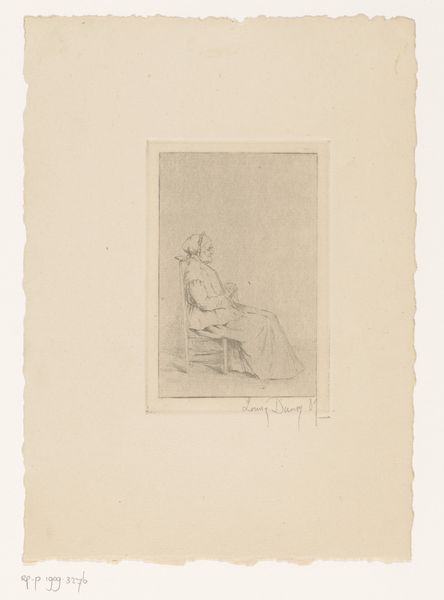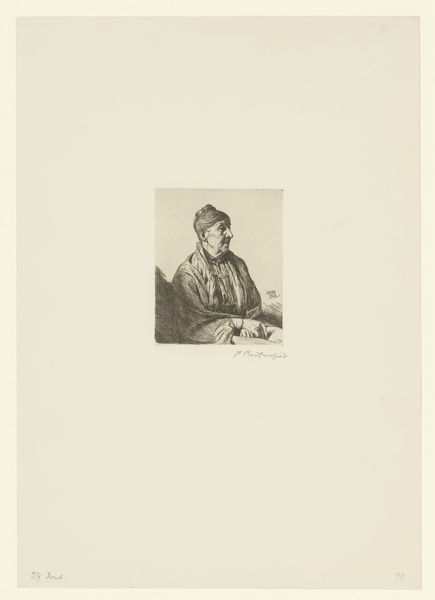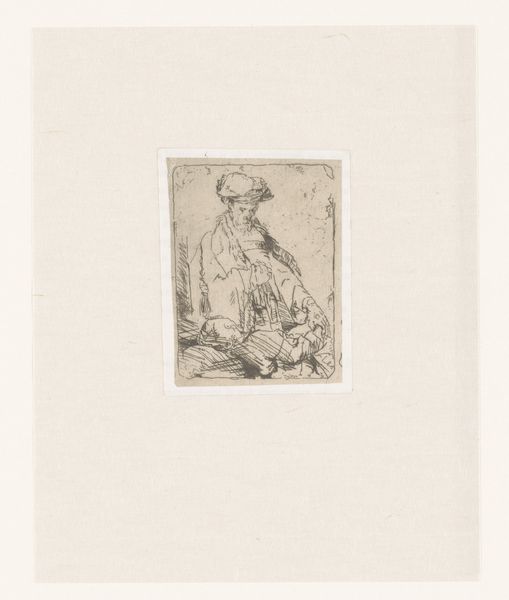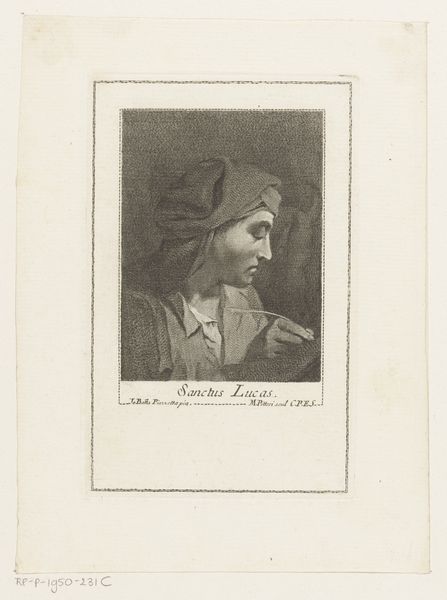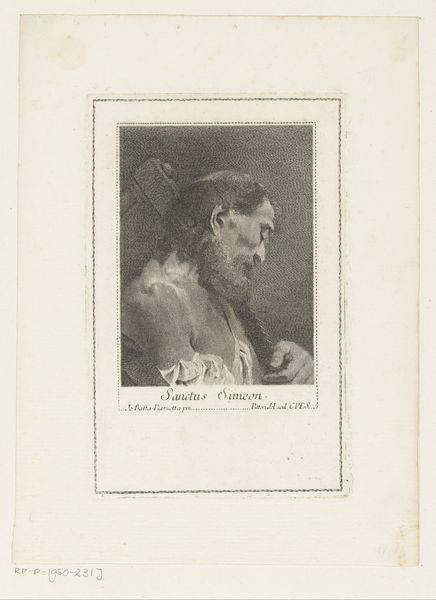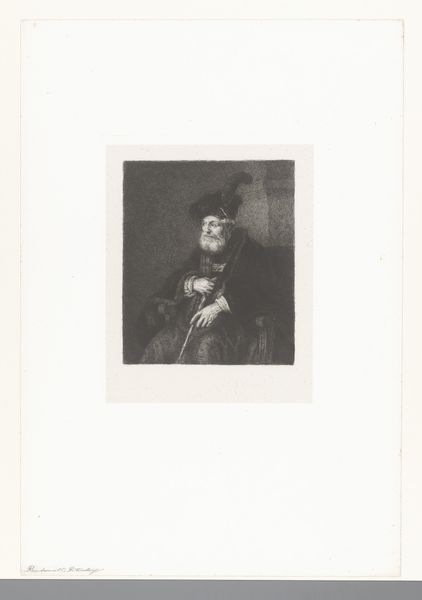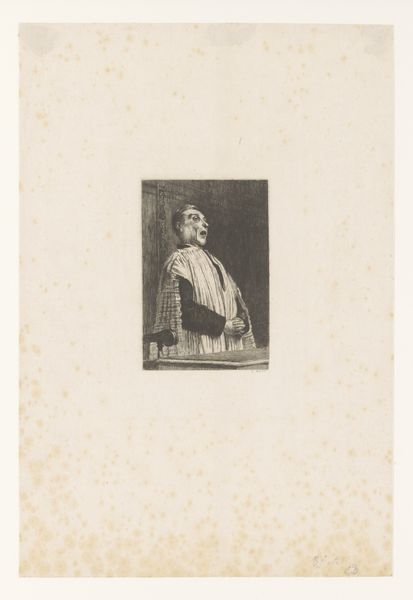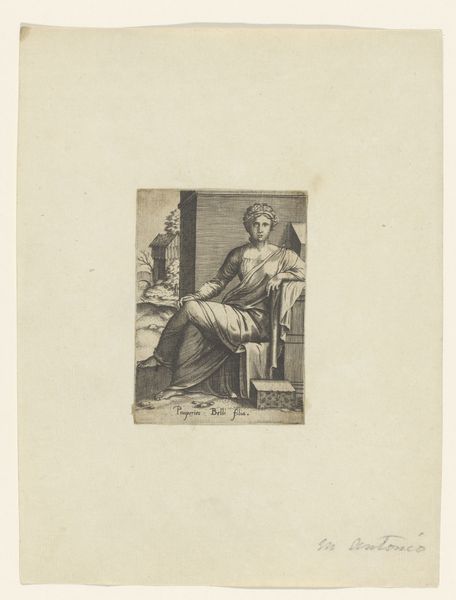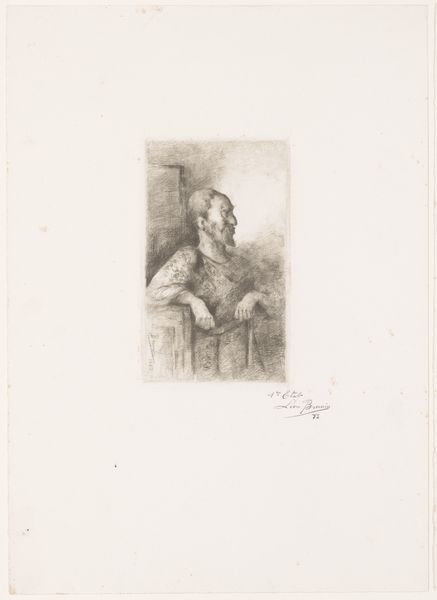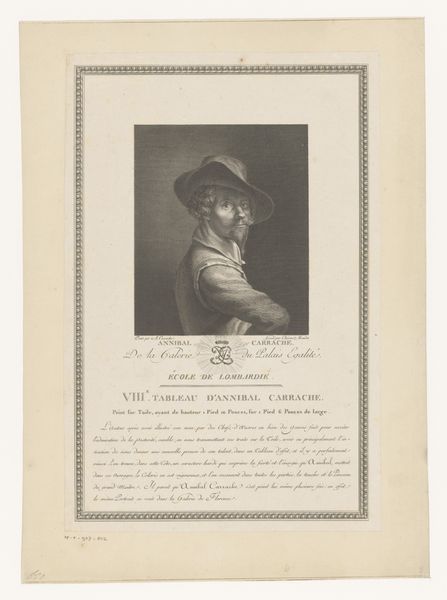
Dimensions: height 238 mm, width 165 mm
Copyright: Rijks Museum: Open Domain
Editor: This is "Zittende vrouw met kan," a drawing by Johann Veit Kauperz, made sometime between 1761 and 1816. I’m really struck by how commonplace it feels, despite its age. How do you interpret this work? Curator: Looking at this drawing, I'm drawn to the depiction of labor and materiality. It is not some romantic ideal of a lady, but the realistic presentation of her task. Note how Kauperz details the vessel, how it appears to be crafted from earthly materials – what implications can we draw from this? Editor: You mean, that the subject isn't from nobility? Curator: Perhaps. More so I wonder about access to materials. The quality of drawing, and even its preservation indicate that this was a privileged record. It speaks to social divisions even while representing an ordinary moment. Editor: So, the medium itself tells a story beyond the woman's activity. Curator: Exactly! The social context of creation and consumption are just as important. Can you see evidence of the production processes – consider the hatching marks and tonal shifts – are there particular tools employed here? Editor: The hatching marks provide volume; but it does appear made rather quickly with simple materials. And now that you mention the background, its boxy presentation resembles window framing – what's the function of such stark presentation? Curator: You've hit on a very astute observation. In its most reduced and straightforward sense it presents itself; by implication suggesting an ordinary activity of one of the working people; with a degree of naturalism often absent during the Baroque and Neoclassical period in fine-art paintings. How about it relates back to what purpose the piece serves or what socio-cultural status those subjects are allowed? Editor: I see. The drawing gives attention to the unglamorous aspects of daily life but by using such a classic and durable medium gives the working person artistic merit. Curator: Precisely! By analyzing the process and materials, we gain deeper insights into the work's social context and challenge the conventional boundary between fine art and everyday existence. Editor: I learned a lot today by focusing on what the artwork is made of, literally and figuratively.
Comments
No comments
Be the first to comment and join the conversation on the ultimate creative platform.
